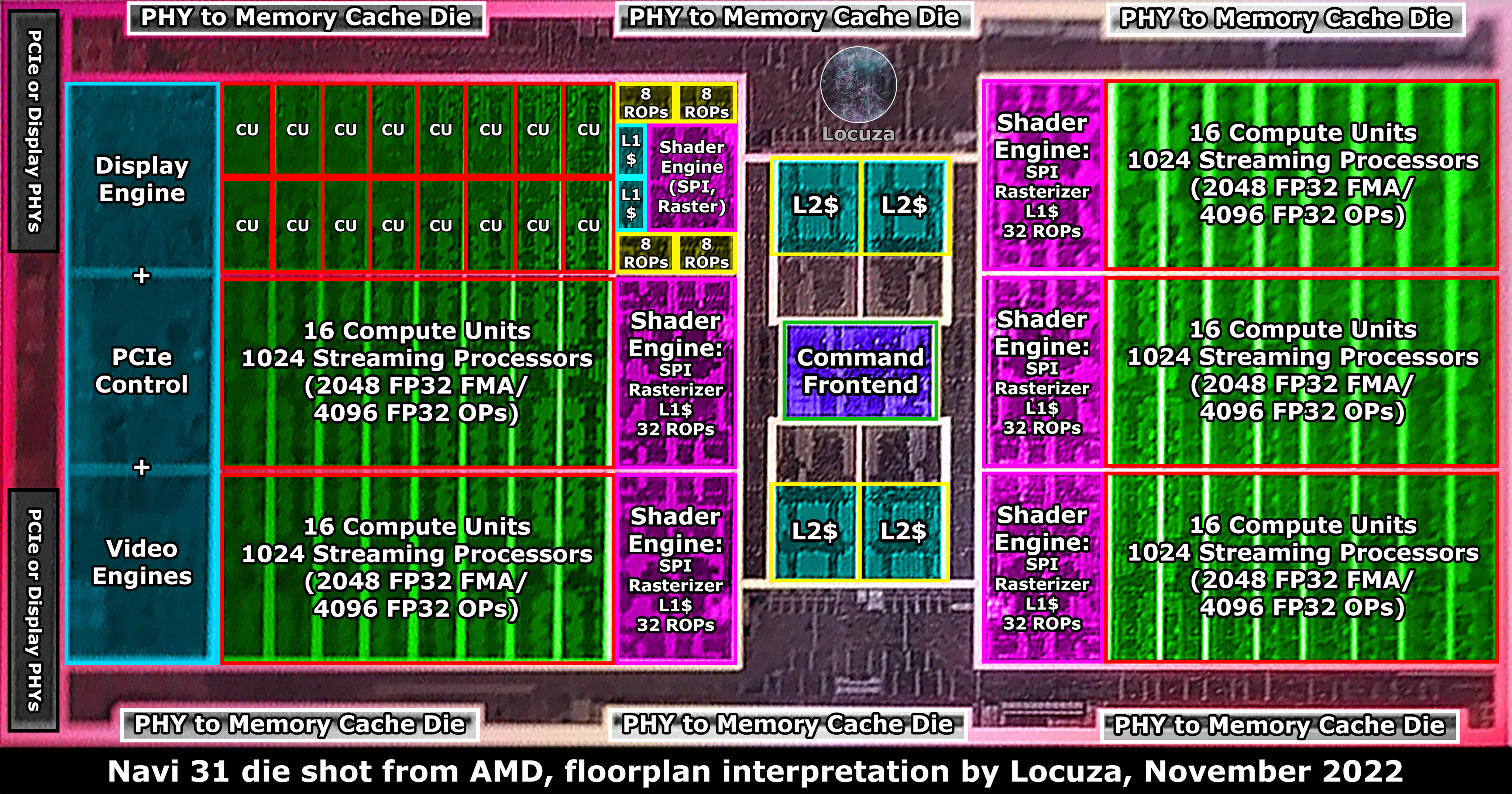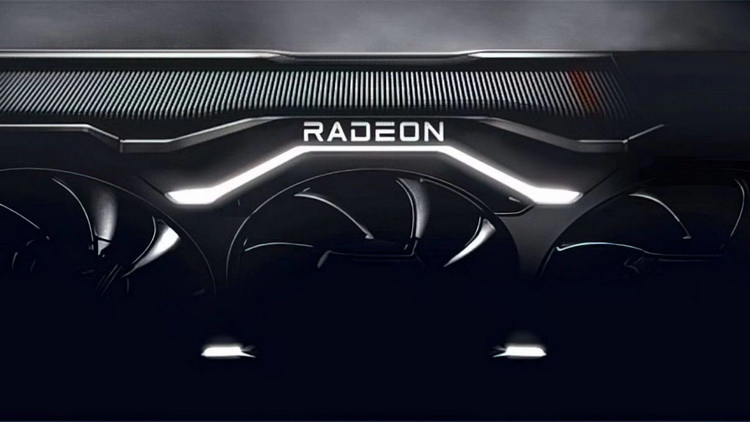
At the disposal of VideoCardz portal appeared the image block diagram of AMD Navi 31 graphics processor, which formed the basis of the new graphics cards Radeon RX 7900 XTX and RX 7900 XT.Image source: AMDThe AMD Navi 31 graphics processor uses a chiplet design.In the center of the chip is a large GCD (Graphics Compute Die) crystal based on the 5-nm process, which includes all the GPU compute blocks and other necessary elements.Around it are six cache memory crystals (MCD).They are built using the 6nm process.Each MCD chip includes a dual 32-bit memory controller combined with L3 cache memory.To date, AMD has only confirmed that the full-size Navi 31 GPU contains 96 MB of L3 cache memory (Infinity Cache), but the manufacturer did not specify the size of L0, L1 and L2 cache memory.This information is clarified by a presentation slide which appeared to VideoCardz and to all appearances was shown to journalists at the presentation behind closed doors.It says that L0 cache memory is 3 Mbytes, which is almost 2.5 times larger than in Navi 21.L1 cache memory is three times larger and is equal to 3 Mbytes.L2 cache memory is up 50% to 6 Mbytes.L3 memory (Infinity Cache) is 96 MB, 32 MB less than that of Navi 21.Image source: VideoCardz / AMDThe diagram above shows Navi 31 with six shader engines using eight pairs of Compute Units.The Radeon RX 7900 XTX was originally supposed to have 12,288 stream processors.However, if you turn to the company's website, we can note the indication of the presence of 6144 stream processors, that is half as many.The reason for this is that RDNA 3 architecture is based on Dual Issue design, which means that it can execute two FP32 arithmetic instructions simultaneously, so we can talk about 12,288 FP32 blocks or thread processors.Meanwhile, the Navi 31 has upped its performance in single precision floating point operations (FP32) to 61 Tflops, more than doubling over the previous generation.The slide also mentions that the RDNA3 architecture is designed to operate at 3 GHz.The same information comes from journalists who visited the presentation of new graphics cards and discussed this issue with AMD representatives on the sidelines.However, it should be noted that the maximum Boost frequency of the reference Radeon RX 7900 XTX is claimed to be 2.5 GHz.That's what it says on AMD's website.How the company is going to implement the 3 GHz support in its RDNA 3 graphics cards is not known yet. Image source: Twitter / @Locuza_ Above you can see an actual photo of the Navi 31 processor with annotations of each chip block added on top, provided by one Twitter user.


0 Comments